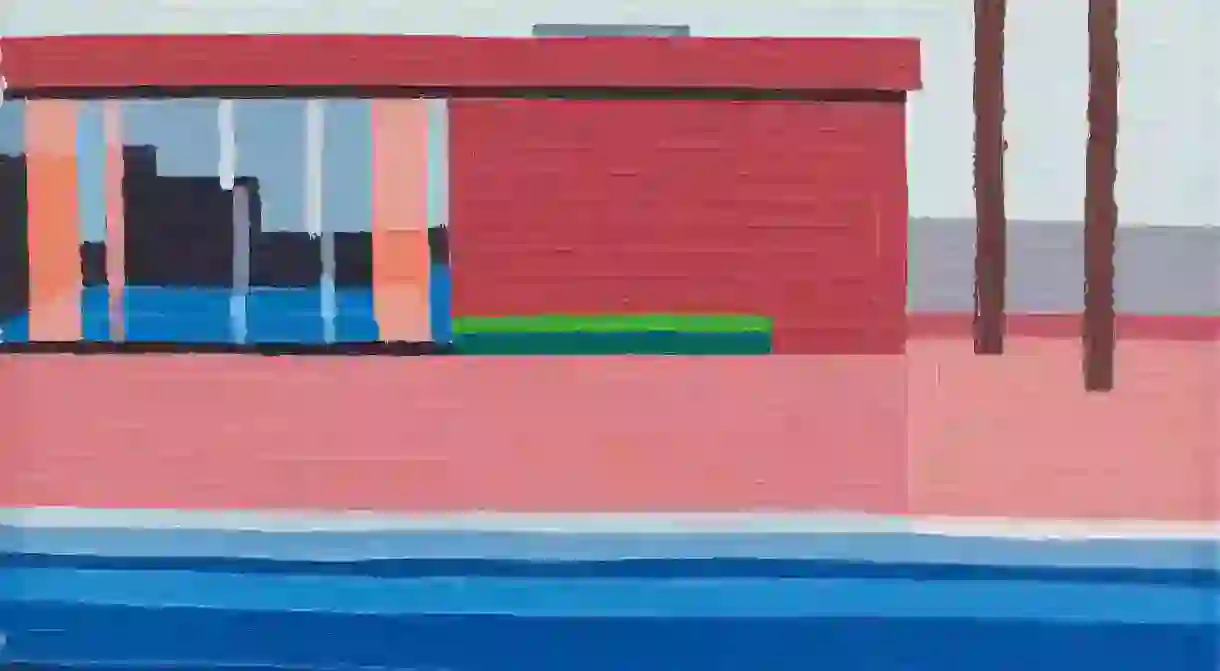Israeli Artist Guy Yanai On Fashion, Art & Social Media

The hunch of a houseplant in the afternoon, the curve of a knee against a ladder, the explosion of a sprinkler in a backyard: artist Guy Yanai’s subjects are figments of a place you used to know. Yanai’s recasting of familiar corners has earned him significant attention in recent years. After a series of critically acclaimed-exhibitions in Europe, Israel and the US, the Israeli artist had a landmark year with shows at Rod Barton Brussels, Frieze NYC with The Breeder Gallery Athens, and NADA NYC with Galerie Derouillon Paris.
Which artists or artistic movements inspire you the most at present?
I don’t really believe in movements, I’m more into individuals. Now and historically speaking. Lately I’ve been looking very hard again at the Villa Livia paintings. No one really knows who did them (individually speaking) but it’s one dude for sure, those are the best trees ever painted, much better than the renaissance or anything like that. So I’m looking at that, at Piero della Francesca and ancient Greek vases.
In the past you’ve spoken about your relationship to space in your work (particularly your studio space). Has that changed over time? How has your attitude towards abstraction vs. formalism evolved? How has your relationship to history and time evolved?
The studio is important, because painting is really primitive, you need a physical space to work. I’m super jealous of artists that can work on a MacBook Pro on a flight. I need to be in a space and get all dirty. Everything is abstract, and most abstraction references the figurative, so now I feel free to do what I want when I want and I don’t really care if its ‘abstract’ or ‘figurative.’ Maybe non-objective art bores me now, something which I used to love when I was 16, 17 years old. History is my friend, and old artists and dead artists help me with boundaries and possibilities. My second family, really.

Do you paint with a particular audience in mind? Relatedly, how has the rise of social media affected the way you create or the way that people consume your work?
No not really, I’m just working with things that are around me and letting my work grow and progress off of itself. I like all kinds of technology and have no problem with social media. I have a tumblr; whenever I have some time I throw up some new images on it. As much as what I do is a physical thing, and in the end I make a physical object, the end-result in people’s brain is an abstract one. I would like some images to be kind of burned into people’s heads, so in this sense I don’t have a problem with people seeing images of my work online or on screens. It’s one more representation of that object, and it’s obvious that it only references the real painting.

How did growing up in Haifa affect your work? How does living and working in Tel Aviv affect your work? How does it compare to being an artist-in-residence in Italy or in LA (later this year)?
I like working in Tel Aviv, and I loved my childhood in Haifa. I also love to travel. So everything is ok, right? I honestly have no idea how Haifa influences my work, but I will say that it does. I’m showing in the Haifa Museum now so things have come a bit full circle. I think that now I really prefer to focus on my own studio here in Tel Aviv. I’m excited to be in LA, and Villa Lena was incredible, but there is no replacement for working in my studio, I guess this is where I am now. Just want to work in a daily rhythm close to home.

You recently served as a collaborator with Band of Outsiders. How do you view intersections between fashion and more commercial design and art?
Collaborations are one more way to surprise yourself with possibilities that I couldn’t imagine. When I painted this plant in front of my building on Ahad Haam Street (in Tel Aviv) I never imagined that it would be a global image on one of my favorite labels. These ‘intersections’ are fantastic. Sterling Ruby and Raf Simons? Amazing, right? I love these collaborations. I think I would love to work with ballet, opera, writers, with everything really. I think the collab with Band was successful. Etudes Studio is a company that I’m really into now. Especially how they intersect their vision on this beautiful thin line of art, fashion, book, etc.
What is your process like for collaborating with other artists (including Kaye Donachie last year)? How about curators?
It’s very similar to collabs with labels and things like that in that different options and possibilities arrive. The show in Paris with Kaye Donachie that Timothee Chaillou curated was wonderful; something that if I were to do it alone in the same space it would never have looked like that.













